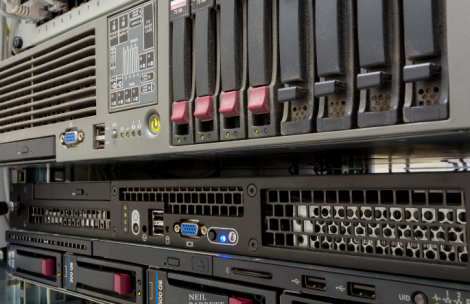Websites either run on Linux-based operating systems (around two-thirds) or Windows (around a third). There are around 1% of sites running on other stuff.
Until a couple of years ago, CentOS was my Linux operating system of choice. It was stable, based on a commercial Linux distro and – importantly for some of the web hosting and development work I do – ran cPanel well. The decision to discontinue production of it came as a surprise to many in the tech community – me included. CentOS, short for Community Enterprise Operating System, has been a popular choice for servers and workstations due to its stability, reliability, and long-term support. However, Red Hat, the company that “owns” CentOS (although it is really a community effort) announced that it would be shifting its focus to CentOS Stream, a rolling-release distribution that serves as a testing ground for Red Hat Enterprise Linux (RHEL), a commercial alternative. This is the important bit – the software which powers most web servers – including Linux itself – is open-source, i.e. free.
This decision left many CentOS users wondering what their alternatives are. Some of the most well known distros, which you may have heard of, are Ubuntu, Debian, or Fedora. But there’s also AlmaLinux – linked to CloudLinux – and Rocky Linux, which is most connected with the CentOS development community.
CentOS version 7 will stop being supported on 30 June 2024 based on the current schedule. Interestingly, the later-launched v8 was discontinued at the end of 2021. Anyway, this means that there’s not long left to make the switch. It’s far from ideal to run old operating systems because they’re not actively supported. In other words, a potential security nightmare, the size of which only grows over time. Also, the team behind cPanel, one of the leading web hosting control panel systems, has laid down a marker in saying that it won’t support new installs on CentOS after some time around that date.
So, over the next 15 months you’ll see a lot of small to medium sized websites moving to different infrastructure, with all of the knock-on disruption that moves can bring to site owners and users alike. Even if you don’t run your own web server – you use a web hosting company’s standard hosting package, for example – the hosting firms who run CentOS will be playing musical servers at some point.
Here’s why there’s a potential for a bit of downtime and disruption when the switch happens:
Linux is great for all the things it does – many people use it as a free alternative to Windows on their home or office computer, alongside LibreOffice. That said, it has usually been technically complicated and risky to do an ‘in-place upgrade’ – advancing the operating system with all the software, files and settings intact. It can be difficult and time-consuming. Essentially, there is a higher chance of something going wrong during the upgrade process, which could lead to data loss or system instability.
In addition, in-place upgrades may not always work as expected due to conflicts with existing software, driver issues, or other compatibility problems. This can result in a system that is less stable than before the upgrade or one that requires additional time and effort to troubleshoot and fix.
That’s why I and others have usually recommended that Linux users start with a fresh install of the replacement operating system and copy things across to it, instead of doing an in-place upgrade. While this may require more upfront effort to set up the new system, it can save time and reduce the risk of errors in the long run.
The downside is, of course, that while you are doing your clean install, copying files, switching DNS over and so on, there’s likely to be downtime for websites and other things on the server such as email. It is actually possible to have an almost instantaneous switchover if you run both servers simultaneously and do things in a particular way but this is also quite technically complicated and risks inconsistencies with data such as e-commerce transactions, customer information and so on.
That said, the clean install has still been the better approach in most situations. Starting with a fresh install allows you to start with a clean slate and ensure that all components of the system are compatible with each other. It also allows you to configure the system to your specific needs, which may have changed since the original installation. For example, you may want to use a different partitioning scheme or change the file system used by the operating system.
If you’re in the position of having to move things to a server with a new Linux OS on it, you do have options once you have set it up. Copying files and configurations from the old system to the new one can be done in a number of ways. One option is to use a backup and restore tool, such as rsync or tar. These tools allow you to transfer files and directories from the old system to the new one while preserving file permissions and ownership. Another option is to use a configuration management tool which can help you automate the setup and configuration of the new system, ensuring that all components are installed and configured correctly.
There is some good news for people who would prefer to do an in-place upgrade or don’t have a choice. The ELevate project is able to automate a lot of work (and troubleshooting!) involved in migrating between different distributions and, as this relatively new endeavour matures, it can deal with many different configurations and use cases. There is also a similar system for servers which have cPanel installed, which can help massively with an in-place migration and reduce the risk of downtime. This is nothing short of wonderful news for website server administrators… but it doesn’t remove all of the risk. Far from it: it could only take one thing that ELevate wasn’t expecting, to scupper the whole thing, although there are plenty of pre-flight checks and warnings to help avoid that sort of situation.
In summary, there will be plenty of websites and email facilities shifting around behind the scenes globally over the next year or two – but the people doing the heavy lifting have a better choice of operating systems and methods than ever before.

